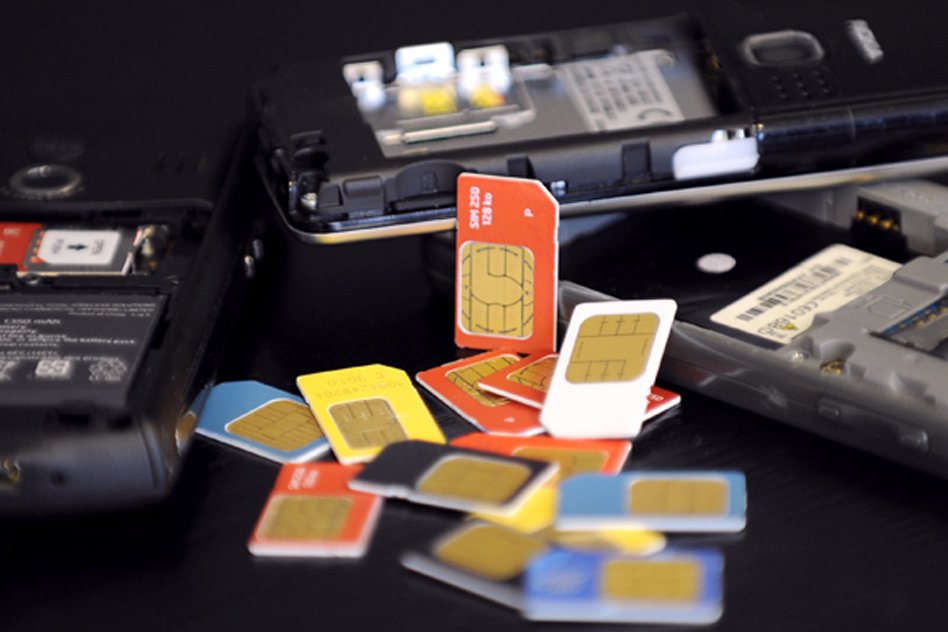October 26, 2023
The Unsung Hero of Connectivity: Unraveling the SIM Card’s Significance

Introduction
- In today’s hyper-connected world, smartphones and cellular devices have become indispensable. Yet, amid the marvels of technology, one vital component often goes unnoticed – the Subscriber Identification Module (SIM) card. This article delves into the intricacies of SIM cards, highlighting their pivotal role in modern communication.
Understanding the SIM Card
Subscriber’s Identification
- The SIM card, short for Subscriber Identification Module, is a microchip tasked with identifying a user within a cellular network. It serves as the digital identity card in the bustling city of cellular networks, aiding in user verification and location.
User Identity
- Much like an identification card in a city, the SIM card helps the network locate and authenticate the user. It acts as the gateway for a seamless connection between the user and the cellular network.
Unlocking Access
- Essential for connecting to a Global System for Mobile Communications (GSM) standard network, the SIM card harbors an authentication key that ensures secure network access. This key is pivotal in safeguarding the integrity of the user’s connection.
Locating Subscribers
- During a call, data signed by the SIM’s key is relayed to a telephone exchange. This data verification process ensures the user’s identity and facilitates the accurate routing of the call, showcasing the SIM card’s role in locating subscribers.
Working Mechanism
ISO/IEC 7816 Standard
- SIM cards adhere to the ISO/IEC 7816 international standard, which governs electronic identification cards, including smart cards. This standardization ensures seamless compatibility and functionality.
Physical Structure
- Comprising an integrated circuit affixed to a silicon substrate with metal contacts on the reverse side, SIM cards interface with the phone’s data connectors. These metal contacts, or pins, have specific functions standardized by ISO/IEC 7816-2, including power supply, clock access, and data transmission.
Evolution of SIM Cards
Smart Card Origin
- The genesis of SIM cards can be traced back to the late 1960s, with the emergence of smart cards featuring integrated circuits. These smart cards laid the foundation for the SIM cards we know today.
GSM Standardization
- The European Telecommunications Standards Institute (ETSI) played a pivotal role in establishing the GSM Technical Specification 11.11, defining the physical features and functionality of SIM cards, primarily tailored for 2G networks.
Transition to 3G, 4G, and 5G
- As cellular technology advanced, SIM cards underwent a transformation. The term ‘SIM’ evolved to represent the software, while the hardware transitioned into the Universal Integrated Circuit Card (UICC). The software, in turn, metamorphosed into the Universal SIM (USIM) to ensure compatibility with 3G, 4G, and 5G networks.
eSIM Innovation
- The journey of SIM cards culminated in the development of embedded SIMs (eSIMs), permanently integrated into mobile devices. These eSIMs not only offer environmental benefits by reducing plastic and metal waste but also enhance security by preventing isolated targeting or duplication.
Future of Connectivity: eSIM
Compact Evolution
- From full-size to nano-SIM, SIM cards underwent size reductions, ultimately leading to the eSIM, seamlessly embedded in mobile devices.
Environmental Advantage
- eSIMs pave the way for a greener future by significantly reducing plastic and metal waste, exemplifying their eco-friendly nature.
Enhanced Security
- The integration of eSIMs fortifies security measures. Malicious attempts to access a phone can no longer independently target or replicate eSIMs.
Remote Reprogramming
- Network operators can remotely reprogram eSIMs, eliminating the need for physical replacements and streamlining the user experience.
Challenges and Considerations
- While eSIMs offer unparalleled convenience, they may pose digital literacy challenges for some users. Additionally, concerns about data privacy persist in the absence of stringent regulations.
Conclusion
- In the tapestry of modern connectivity, the SIM card stands as an unsung hero, facilitating seamless communication in a digitally interconnected world. As we forge ahead, the evolution of SIM cards, exemplified by the eSIM, promises a future of enhanced efficiency, environmental consciousness, and fortified security. Yet, it is imperative to address challenges and privacy concerns, ensuring that this cornerstone of connectivity continues to serve us seamlessly and securely in the years to come.
Daily Gist : The Hindu/Indian Express : 30 Jan 2025
January 30, 2025
Gist of editorial : the Hindu/ Indian Express/20 Jan 2025
January 20, 2025
Daily the Hindu/ Indian Express Editorial Gist: 14 Jan 2025
January 14, 2025
